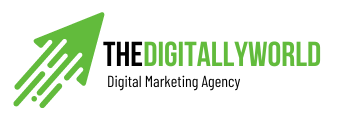
If you’re managing a website, you likely rely on Google Search Console (GSC) to monitor its performance and visibility. One common issue you might encounter in GSC is the “Crawled – Currently Not Indexed” status. This means that Google has crawled your page but hasn’t yet indexed it, which can affect your site’s visibility in search results. Here’s a comprehensive guide on how to fix this issue.
1. Understand the Issue
First, it’s important to understand what “Crawled – Currently Not Indexed” means. When Googlebot crawls a page, it fetches and analyzes the page’s content. However, indexing is a separate process where Google includes the crawled page in its search index. Pages in this status have been crawled but not indexed, meaning they won’t appear in search results.
2. Check for Common Issues
Several common issues can prevent a page from being indexed:
Thin Content: Pages with very little content or content that adds no value are often not indexed.
Duplicate Content: If your page content is too similar to other pages on your site, Google might choose not to index it.
Low-Quality Content: Content that is poorly written or uninformative may be excluded from the index.
Technical Issues: Problems such as incorrect use of noindex tags, blocked resources, or crawl errors can prevent indexing.
3. Improve Content Quality
Content is king when it comes to SEO. Ensure your page offers unique, valuable, and comprehensive information that is relevant to your audience. Here are some tips to improve content quality:
Add More Information: Expand your content to cover the topic in more detail.
Use Multimedia: Incorporate images, videos, and infographics to enrich your content.
Ensure Readability: Use headings, bullet points, and short paragraphs to make your content easier to read.
4. Resolve Duplicate Content Issues
If your page content is too similar to other pages on your site, consider consolidating similar pages or using canonical tags to indicate the preferred version of the content. Tools like Copyscape can help identify duplicate content on your site.
5. Fix Technical SEO Issues
Technical issues can significantly impact indexing. Here’s how to address common technical problems:
Check Noindex Tags: Ensure your page doesn’t have a noindex tag in the HTML or HTTP header.
Review Robots.txt: Make sure your robots.txt file isn’t blocking the page from being crawled.
Ensure Proper Canonicalization: Use canonical tags to avoid duplicate content issues and guide Google to the preferred version of a page.
6. Improve Internal Linking
Internal links help Googlebot discover and understand the importance of your pages. Review your internal linking structure and ensure your important pages are linked appropriately from other relevant pages on your site. This can help improve the crawl frequency and indexing of these pages.
7. Generate Backlinks
Backlinks from reputable sites signal to Google that your content is valuable. Building a strong backlink profile can help improve the indexing of your pages. Engage in guest posting, influencer collaborations, and other link-building strategies to earn quality backlinks.
8. Submit the URL for Indexing
In Google Search Console, you can manually request indexing for your URL. Here’s how:
Go to the URL Inspection tool in GSC.
Enter the URL of the page you want to index.
Click on “Request Indexing.”
While this doesn’t guarantee immediate indexing, it can prompt Google to revisit and potentially index your page sooner.
9. Monitor Crawl Stats
Regularly review the Crawl Stats report in GSC to understand how Googlebot is interacting with your site. Look for any anomalies or significant drops in crawl activity, which could indicate underlying issues.
10. Patience and Persistence
Sometimes, it simply takes time for Google to index your pages. Ensure you’ve followed all best practices and give Googlebot time to revisit your site. Continually monitor your site’s performance in GSC and make adjustments as needed.
Conclusion
Fixing the “Crawled – Currently Not Indexed” issue in Google Search Console requires a comprehensive approach, addressing both content quality and technical aspects. By improving your content, resolving technical issues, and enhancing your site’s overall SEO, you can increase the chances of your pages being indexed and appearing in search results.








Leave a Reply